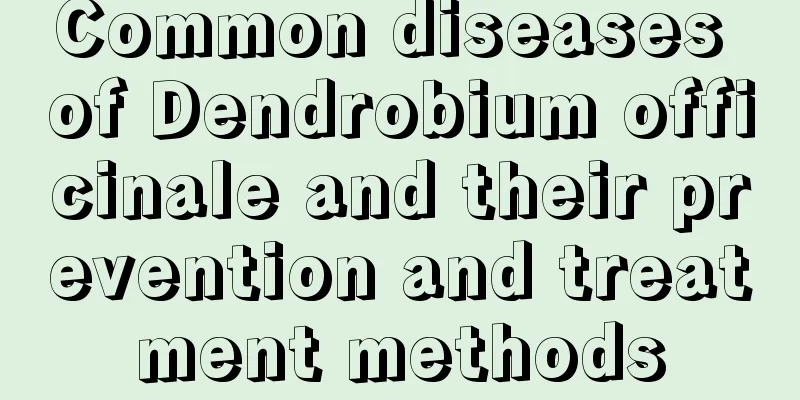Common diseases of Dendrobium officinale and their prevention and treatment methods

Common diseases of Dendrobium officinale: black spot diseaseSymptoms of black spot disease of Dendrobium safflowerWhen the disease occurs, dark brown spots appear on young leaves, with yellow surrounding the spots, which gradually spread to the leaves. In severe cases, the black spots connect to each other on the leaves, and finally wither and fall off. This disease often occurs in early summer. Prevention and control methods of black spot disease of Dendrobium officinaleIf the symptoms are severe, the diseased leaves can be manually cut off. Chemical control: Use 1:1:150 Bordeaux mixture or 1000 times solution of Dolin to prevent and control its development. Common diseases of Dendrobium officinale: AnthracnoseSymptoms of Anthracnose in Dendrobium officinaleIt harms leaves, stems and branches, and brown or black spots appear on the affected leaves. It occurs from January to May. Prevention and control methods of anthracnose of Dendrobium officinaleSpray 1000 times diluted 50% carbendazim or 1000 times diluted 50% thiophanate-methyl for 2-3 times. Common diseases of Dendrobium officinale: Sooty moldSymptoms of Dendrobium officinale sooty diseaseWhen the disease occurs, the entire surface of the plant's leaves is covered with a layer of soot-black powder, which seriously affects the photosynthesis of the leaves and causes plant stunting. March to May is the main outbreak period of this disease. Prevention and control methods of Dendrobium officinale sooty diseaseSpray 1000 times diluted 50% carbendazim or 1500 times diluted 40% dimethoate emulsion 1-2 times for prevention and control. The domesticated Dendrobium requires a good ventilation environment and good drainage performance of the pot soil. Always pay attention to maintaining the air humidity, otherwise it is easy for the Dendrobium to develop these nasty diseases. |
<<: Diseases and control methods of echinacea
>>: Diseases and Pests of Rosa chinensis and Their Control
Recommend
How to trim the brocade star
When is the best time to prune the spathiphyllum?...
Can you eat kale?
Can you eat kale? Since we often see the colorful...
Is loofah high in carbohydrates or vegetables?
Luffa is a common vegetable and also a grain crop...
When should we apply fruit-enlarging fertilizer to water chestnuts? What fertilizer is good for water chestnuts during their enlargement period?
Water chestnut is a household-known plant. It can...
Where does Pangdahai grow? Where does it usually grow?
Growth habits of Sterculia lychnophora Sterculia ...
How to plant yellow broom tree stump
1. Planting time The stump of the yellow broom ha...
Stop being obsessed with European roses. Our ancient Chinese roses are almost extinct.
Pingtung Rose Powder Makeup Building Purple Swall...
Does green radish need sunlight?
1. Get some sun As a kind of green plant, green r...
When choosing flowers, first look at the indoor light
Plenty of sunlight Some homes, such as top floors...
Can the lucky charm be placed in the bedroom?
1. Can Nowadays, there are actually many discussi...
What should I do if the lucky flower withers?
The lucky charm plant is a flower of the Bromelia...
Is weathered rock acidic or alkaline? Is weathered rock good for growing orchids and succulents?
Characteristics of Weathered Fossil Soils Weather...
How to Identify Black and Purple Sunflowers
1. Leaves The leaves of the black purple sunflowe...
How to prune Rieger Begonia
The necessity of pruning Rieger Begonia The branc...
How to grow Impatiens
1. Cultivation time The best time to cultivate Im...









